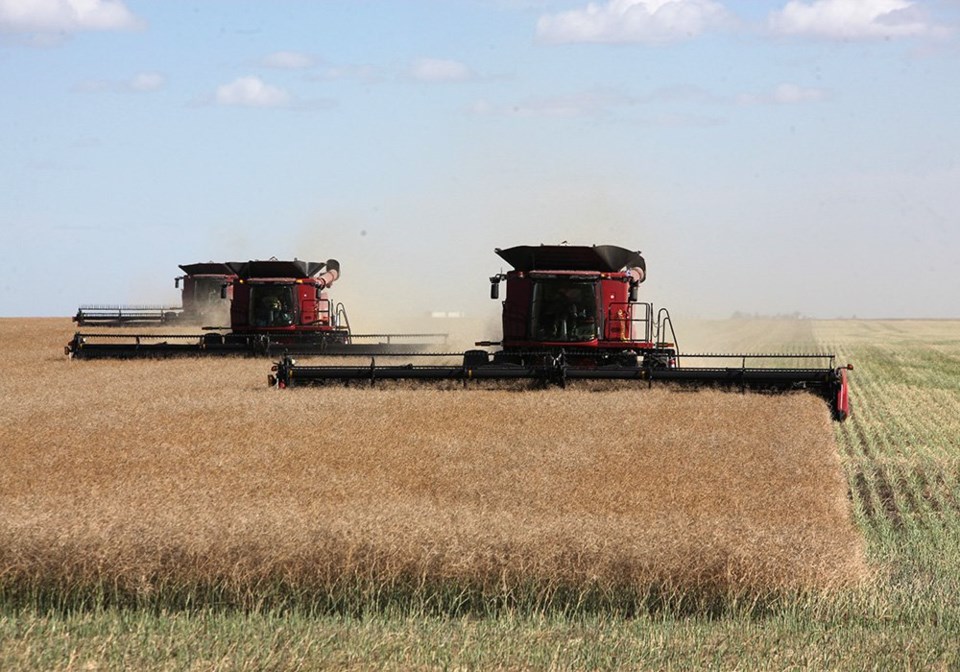“How could you not be tempted to do something?” he asked delegates attending a recent webinar.
“I mean, those are fantastic prices.”
He acknowledged that some farmers in dry regions of the Prairies may be gun shy about signing contracts after hearing some of this year’s horror stories of farmers who were unable to meet their contracts and had to buy their way out.
However, based on pure economics he would definitely be interested in signing a contract at today’s values considering there is likely to be more soybean acres going in the ground in the United States, the prospect of a record South American crop and likely more canola acres in Canada next spring.
Jubinville was asked if $25 or $30 per bu. is possible for old crop canola.
“In this kind of crazy pricing environment everything is possible at the moment,” he said.
But canola would need a lot of help from crude oil prices as well as the soybean market and he doesn’t see that happening.
Fellow MarketsFarm analyst Bruce Burnett chimed in, saying the key to old crop canola prices will be the European rapeseed crop, which is in the ground now. If weather conditions in that region turn unfavourable, anything can happen.
“That is the one thing that could push this canola market higher quickly,” he said.
Jubinville said Canadian crushers are going to use the vast majority of this year’s canola production, buying an estimated 9.5 million tonnes, down slightly from the 10.4 million tonnes crushed in 2020-21.
That will leave about 4 to 4.5 million tonnes for export, which is a fraction of last year’s 10.5 million tonne program.
He believes two million tonnes have already been shipped and another one million tonnes is in position, so there will be scant export volumes in the second half of the marketing year.
Jubinville is forecasting a “bare minimum” 650,000 tonnes of carryout, so it is definitely not a bearish market but he can’t help shaking the feeling that $23 cash canola prices can’t last.
Australia harvested five million tonnes of canola and that will create periods of “demand holes” for Canadian product.
MarketsFarm is advising growers to be 50 percent priced on canola and to make incremental sales into rising markets.
“We are certainly watching for our next sales trigger and that may come sooner than we think,” he said.
Barley is another crop that he recommends aggressively selling early. The market is still holding up nicely but he thinks it has plateaued with feed barley prices in excess of $9 per bu. in Alberta and $8 to $9 in Saskatchewan.
That is because “copious amounts” of U.S. corn are already starting to flow across the border. He is forecasting a record three million tonnes of imports, up from 750,000 tonnes last year.
He believes feed barley values will eventually gravitate toward the landed price of U.S. corn in southern Alberta, which is about $30 per tonne cheaper than barley.
The oat market is “tight beyond belief.” Jubinville is forecasting 325,000 tonnes of carryout, which is as low as it can go.
Processors are “digging deep” in an effort to supply their mills. There are reports of oats from the Peace River region of Alberta being trucked to Saskatchewan.
There are no signs of the market turning bearish anytime soon and Prairie cash prices of $10 per bu. are likely “here to stay,” he said.
Peas have priced themselves out of China’s feed market at $17 to $18 per bu. He is forecasting a 1.25 million tonne export program to that market, down from 2.75 million tonnes last year. China still needs peas for its fractionation and noodle markets.
Much of the remaining export business will be to the U.S. food and pet food markets, although there has been a bit of a pause in that source of demand of late.
Red lentil prices have fallen from their highs of 50 cents per pound a couple of months ago but are still fetching 44 t0 45 cents for January through March delivery.
The market is in a “corrective/lethargic phase” due to 800,000 tonnes of Australian product hitting the market at prices that work out to 40 to 42 cents at a midpoint in Saskatchewan.
The big risks in the red lentil market are India’s intrusive import policies and difficult container logistics. That doesn’t make the market bearish but it minimizes the bullish sentiment.
Green lentils are also slightly off their highs of 65 cents per lb., although recent sporadic demand has pushed prices back to 63 or 64 cents for No. 1 product.
Core users need more product, so the demand is there. However, Indian pigeon pea prices are cheaper than Canadian green lentils, which limits the upside.
Jubinville warned that both red and green lentils are nearing the end of the traditional two-year cyclical run-up in prices.

